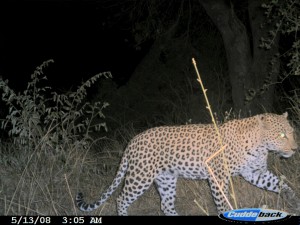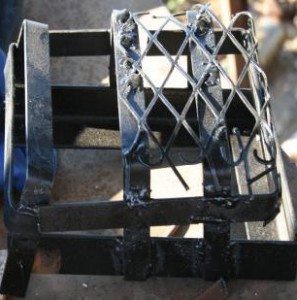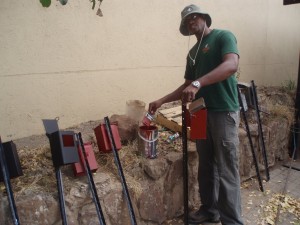Camera Traps
Currently I’m in the process of quantifying leopard numbers in the concession. This has proven not to be an easy task which requires a lot of time to plan and acquire proper equipment. Firstly we had to purchase equipment from the United States, but then had to wait for two weeks for the cameras to be released from the customs services at the airport.
After receiving the cameras, I had to make a decision to put up the cameras in the field and run the risk of having hyenas and elephants crush them to unidentifiable pieces or to make steel boxes to try and protect them. I decided to take the latter. I asked around to find a suitable person to make the units for me, but they were all beyond my budget. As a result, I went on to try and make my own unit pictured below. It didn’t look like it was going to work properly even though I had every intention to put it to the test (I thought it was work of art!!!).
Then my colleagues talked some sense to me to try and get someone to make the boxes for me. That’s when Mr. Mtungwa came in to the picture. He was kind enough to offer to make the boxes at a reasonable price per unit.
I am preparing the camera traps
The next step was to try the cameras out in the field. I was curious to see how the cameras worked and to see if I can use them to estimate leopard densities using the mark-and recapture methods in the concession. I spent three days with a very experienced Glass Marimane, the Head Tracker at Singita. He managed to show me the exact places where leopards were spotted in the last four years and where we were likely to capture leopards. We then put the traps in those areas to test the effectiveness of the cameras.

The camera traps work!

